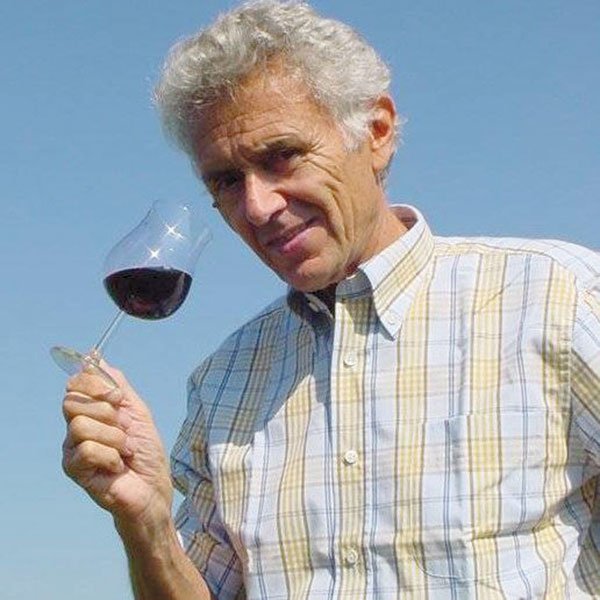Autumn is an especially busy time in the wine world. There is
the harvest and crush, of course, and then there’s all that juice
to deal with and turn into wine. It’s a time of furious activity, a
peak season in the industry.
Autumn is an especially busy time in the wine world. There is the harvest and crush, of course, and then there’s all that juice to deal with and turn into wine. It’s a time of furious activity, a peak season in the industry.
In the vineyards, the grapevines morph into fantastic colors. They offer an eye treat to those of us originally from “back east” who may be nostalgic for the fall months in the rolling hills of New England and the Midwest, although in our little corner of the world we generally don’t have to deal with the teeth-chattering, frosty mornings when you have to get out a curious gadget known as an “ice scraper” and hack the morning ice off of your windshield so that you can see out well enough to navigate your way to work.
For the benefit of native coastal-area Californians, an “ice scraper” is a tool, usually constructed of wood or plastic, with a plastic blade on one end and a brush on the other. The user scrapes off any ice that has accumulated on the windshield overnight with the blade end.
The brush comes in handy later in the year, when the car is buried under a couple of feet of powdery snow. Then it’s time to use another oddity, the “snow shovel.” These are arcane torture devices used to remove rain that has frozen to become “snow,” a white, powdery substance that accumulates over everything outdoors. One inch of rain translates to about 10 inches of snow.
By now, you’re saying: “So what’s all this got to do with wine, Mikey?” And the answer is: not much, but I love not living in a world without ice and snow. It’s fun to remember the days when it took an hour just to get the car warmed up and scraped off, and the driveway free of enough snow to get out to the road. Fun, but not fun enough to tempt a return.
Many wine lovers eagerly anticipate autumn, and the third Thursday of November in particular, because that is when Beaujolais Nouveau is released. Some wine snobs sniff at this wine, deeming it beneath them, but others can’t wait to get some in their glass. No one really considers it a serious wine, because it is bottled and shipped at a very tender age, and it is not intended to have much of a shelf life.
Personally, I really like the stuff. It’s very drinkable and it reminds me of the simple, inexpensive wines that you get in mère et père restaurants, gasthauses and trattoria throughout Europe. Anything that brings to mind the wonderful times I’ve been fortunate enough to enjoy in Europe is OK in my book.
So what is it? The term Beaujolais Nouveau means “New Beaujolais” and refers to a very fruity young red wine. It is produced using a method known as “carbonic maceration.” While that may sound like something that doesn’t belong in a family newspaper such as this, it involves fermenting whole bunches of grapes – not crushed – along with carbon dioxide gas in sealed containers. This results in a wine with lots of fruit flavor and very little tannin.
As they are with many things – especially their language – the French are quite particular about their wine and have concocted lots of rules and regulations about it. For instance, this wine is always released on that aforementioned third Thursday, regardless of when harvest began. The grapes are of the Gamay varietal (Gamay noir á jus Blanc), and can only come from the appellations of Beaujolais and Beaujolais-Villages. About one-third of all the grapes grown in Beaujolais are used in Nouveau and they must be harvested by hand, and in this, Beaujolais joins Champagne as the only two regions where this is mandatory.
Speaking of how testy the French are about things, if you want to have some fun, find a French person, pour them a lovely glass of quality California sparkling wine, and proceed to call it “Champagne.” The fireworks will be vastly more entertaining than anything displayed on Bastille Day.
Perhaps the name most often associated with Beaujolais Nouveau is Georges Dubœuf. Known as “The King of Beaujolais,” Dubœuf is credited with turning Nouveau into one of the wine world’s most successful marketing stories. His family has been involved in winemaking for more than 300 years, so it’s safe to say he knows his way around a winery. Beaujolais Nouveau lovers watch the Dubœuf Web site (www.duboeuf.com) anxiously awaiting pronouncements from the master as to the expectations of the vintage.
The one beef I and many others have with Beaujolais Nouveau is what has happened to the price in recent years. I know, I know, everything has gotten more expensive, but this stuff has gone up faster than the price of a tank of unleaded. There is, after all, a limited supply of this wine, and Monsieur Dubœuf’s efforts have made it among the world’s best known. So the law of supply and demand takes over.
A few years ago I was watching a program on the Discovery Wings channel about air freight. Part of the show detailed how Beaujolais Nouveau is distributed, and focused on a fleet of humongous 747 cargo jets that are held on standby, awaiting 00:01 on the third Thursday of November and the moment when a new supply of “new Beaujolais” is released to a thirsty world. Perhaps the wine flies first class, explaining why it’s become so expensive.
And it sips California Champagne on its journey.











